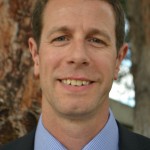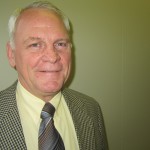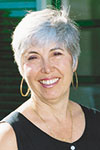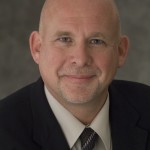Living, Learning, Leading: HR Then and Now
By Nancy Painter
Once there were clerks who figured out how much each employee got paid, and made sure they got their money. Picture poor Bob Cratchit with his quill pen pressed hard to work for Ebenezer Scrooge, recording every shilling paid to his workers.
Now, picture today’s human resources professionals, advising leadership teams and sitting at the executive table.
Though far apart, the two scenarios are separated only by time—and a whole lot of living, learning and leading on the part of HR.
A Brief History of People Practices
Between them are the 1913 establishment of the world’s first HR organization, Britain’s Welfare Workers’ Association (now the Chartered Institute of Personnel and Development); the growth of labour relations as trade unions appeared in the workplace; establishment of accepted guidelines for HR practitioners; and research into
organizational behaviour resulting in specialized education in the field now known as human resources management.
Roger Wheeler, MSc, MBA, CHRP, is a professor at Okanagan School of Business, Okanagan College in Kelowna. “Back in the ‘70s and ‘80s, the only really well researched areas of HR were organizational psychology and labour relations,” he explains. “In the late 1980s and early ‘90s, specific research began as other aspects of HR emerged. Once the research was done, textbooks became available and educational programs reflected the information available.”
There was a recognition that work was changing as the business world emerged from the 1990s, he adds. The knowledge economy recognized that “people were more than a pair of arms and legs, and could contribute intellect, innovation, engagement and creativity.”
From Transactional to Transformational
HR has developed from its original transactional focus to value-added transformational activity, according to Brian Bonia, director of HR at Yukon College in Whitehorse. While the value of the transactions can’t be underestimated—correctly paid payroll, date monitoring for appraisals, reviews and probationary periods, recruitment, issuing T-4 slips, monitoring acting and developmental assignments are all necessary to the functioning of an organization—human resources professionals now provide data and advice for informed decision-making throughout the organization.
“It’s hard to say which came first, the need for HR to provide more guidance or HR providing guidance that proved valuable,” Bonia says. “HR has kept pace with the need for data for informed decision-making throughout organizations, whether it’s sales cycles, qualifying prospects, closings, etc.”
A More Systems-Based Approach to HR
“The more that managers came to understand the significance of individual processes, the more they saw that the processes could be monitored for change and improvement.” That’s resulted in a much more analytical, systems-based approach to what HR does, Bonia adds.
“For example, in recruitment, we understand the need for properly identified job descriptions and a full understanding of what the requirements are, what media are most effective in reaching candidates, the retention rates of particular types of persons, the success rate of specific competencies,” explains Bonia. “It’s an in-depth dive into what produced the best results in the past and could do so again in the future.”
The advent of the information age has had an impact on recruitment. “There is a much broader base of talent now, “ says Bonia, “and two and a half or three degrees of separation. We still validate our perceptions through the recruitment process but we can also reach out to someone for a solid character reference. The information age has made the process national, if not international. Look at the growth of LinkedIn as a recruitment tool.”
Business Focus First is Essential
Eileen Stewart, BA, MBA and BC HRMA’s 2012 HR Professional of the Year, has been working in the field for 40 years. Now a consultant, she was also the HR program head at the BC Institute of Technology for 10 years, and is the author of the popular textbook, Essentials of Managing Human Resources.
“When I was a baby HR person, we told line managers what to do and controlled their decisions,” Stewart recalls. “Now we understand that we’re there to help line managers, not control them. We’re facilitative, filling a supportive advisory role to help managers working at the operational level.”
Stewart knows how she believes HR should be changing, but isn’t convinced that significant change has occurred, in spite of greater understanding. “Generally speaking, you’ll find HR as part of the executive group, but whether or not others there believe HR brings value to the organization, I’m not sure,” she says. “I’ve known lots of CEOs who refused to have HR at the table because it was so transactionally focused that it couldn’t see the forest for the trees. Or they don’t see HR as adding value, as addressing business needs.”
The solution, Stewart adds, is for HR practitioners to be business people.
“You have to be a businessperson first and foremost before you can be an HR person. What is it that the organization needs to be successful in its business? What is the context? You need to understand the business, revenue streams, be able to read a balance sheet or financial report, and understand the drivers of profit and loss,” says Stewart. “I’m not sure our contribution is as highly regarded as people would like it to be. HR hasn’t convinced the senior teams of its value, or that organizations need to get the most out of their people for business success.”
HR Careers Drive Change From Within
Others do see progress in HR “being at the table,” and credit it to the same business savvy Stewart cites. Cindy Dopson, MBA, CHRP, is currently director of HR at the BC
Cancer Foundation, but BC HRMA’s 2013 HR Professional of the Year has also worked in big business including Telus.
“In the organizations I’ve worked in, the value of HR has changed,” she says. “Who is being recruited for senior HR roles is also changing, from being based on years in HR to a combination of business and HR background. There’s more diversity in HR careers, and more back-and-forth between business units, bringing two or more perspectives to HR roles.”
Textbooks are also reflecting those links, Wheeler says. “They may be about specialized areas within HR, but they always make the linkages to other parts of HR and their impact on business generally.” The industry is also gaining a body of knowledge specific to Canadian situations as more research is done, enabling educational institutions to offer more specialty courses within HR.
“As career paths are changing, we’re continuing to become more strategic at senior levels,” Dopson continues. “We’re more directly involved in the business now. Rather than being brought in to manage employees after decisions are made, we’re now part of the strategy in making decisions and discussing the impacts of potential decisions on employees, culture and how they affect the overall success of the organization. We’re not just reactive.”
Engaging Employees and Leaders Alike
While businesses have been saying for a long time that people are assets, Cindy adds, “It’s taken time to establish how we make that meaningful. The original ‘treat employees well and they will stay’ is still true, but it’s highly superficial. Now we look at how to make sure that all our systems are effective in giving employees the tools and information they need. We understand that there’s a bigger link than just being happy to being effective and productive.”
“There’s a mystique that only HR people can do things,” Stewart says. “Ideally good managers can do them. You’re providing guidance and advice to managers to help them be the best people managers for their business. Unfortunately, organizations still look at technical skills when choosing managers and don’t look at foundational concepts, the training and development that a person needs to be successful as a manager.”
So while HR continues to develop and excel in areas such as training and development, its challenge lies in helping other leaders understand the strategic value those areas add to business success, framing their contributions as business solutions, and considering business needs when developing their solutions.
HR Has Its Own Voice
Greg Conner, CHRP is the VP, Employee and Corporate Services, at League Financial Partners in Victoria and an HR instructor in the MBA program at the University of Victoria’s Gustavson School of Business.
“HR has moved from being a sort of bizarre subset of finance to being seen as a key player in the boardroom,” Conner says. “It stands on its own with its own voice. HR has become more strategic and forward-focused, looking at what the future needs of the workforce are.”
A tipping point in his career, Conner says, was learning to create policies and programs that recognize individuality in order to maintain and enhance productivity for the organization.
A People-Centric Business Focus
“I learned early on that having a people-centric focus, treating employees as clients within the organization, had a strategic benefit. I recognized that each market has different needs, from employees just starting out, to mothers with young children, to those with elder care issues. I was one of the first to talk about elder care issues and how employees could deal with them and still be productive in the workplace.”
Conner notes an increased emphasis on change management in the last decade for HR. “It’s really increased in focus and in our ability to impact the success of any change initiative. Change management is people management—managing knowledge and expectations. It’s become so important because poor change management is the heart of failure.”
“It’s about bringing people on board and involving them,” Conner says. As in the growth of the HR discipline itself, good change management is “about letting go of absolute control and recognizing the value of the knowledge in your employee base.”
“We don’t need to know everything. We need to let people who work with us spread their wings and support them in it. Our job is to remove obstacles and create an environment people like to be in.”
Growing Leadership Potential
Like Stewart, Conner sees one of HR’s major impacts in hiring good leaders who will provide their employees with opportunities to learn, grow and stretch, thereby contributing to organizational success at a much higher level than merely by producing widgets.
In practical terms, the face of HR practitioners has changed in recent years, too. Okanagan College’s Wheeler notes that the discipline used to be divided along gender lines. “Labour relations, or health and safety, used to be seen as having more conflict, and were very male-dominated. On the other side, the more administrative personnel management and payroll had a larger proportion of female practitioners. And classically, it was men who sat on senior management teams in organizations. As the work world and industry have progressed, we’ve seen much more diversity in both education and organizations.”
Wheeler points to the development of national certification standards as a step in HR’s progression, and notes that generally accepted HR principles are now being developed by the Canadian Council of Human Resources Associations (CCHRA) and the Certified Human Resources Professional designation (CHRP). “The declaration of these may change the learning outcomes of HR training.”
Global Trends Drive HR Initiatives
Globalization will continue to affect how HR operates, Wheeler adds. “There’s an increasing emphasis on the need to understand diversity and culture. Whenever there are several different types of people in an organization, you need to collaborate and work collectively. HR must learn to leverage diversity to the organization’s advantage, especially as more organizations work across borders.”
Part of the trend to international operations involves workforces in which groups of employees have never met each other. “We need to understand how important it is to build and maintain a strong corporate culture, to build high performing teams, even when individual team members are in different locations.”
Global sourcing of talent is another growing area. Conner points out that it was once unheard of for Canadian organizations to recruit overseas, but now it is common for HR to be familiar with Immigration Canada requirements. “It’s part of the lexicon in the corporate world.”
He cites succession planning, along with training and development, as future priorities. “Training and productivity go hand in hand. Canada used to be a world leader but we’ve dropped significantly in per capita spending on training and development. That’s short-sighted. A small amount of money invested can have a huge positive impact.”
Metrics will continue to be a big part of the HR of the future, according to Conner. “Canada lags well behind many other countries in productivity. We need to ensure metrics for performance and productivity for every position in an organization. What gets measured gets done.”
And while there has been a trend in recent years to outsource many of the basic transactional work in HR, Conner sees that moving back inside Canada in the future.
Tomorrow’s HR a Study in Education Today
Education in HR continues to develop stronger links with business education. “A big piece of HR education is for students to understand HR as a way to involve people to get the most out of them to achieve business objectives,” Wheeler says. “They need an integrated understanding of the role of HR in an organization, and must understand the money side of the business. HR can’t operate in a silo.”
All parties agree, the need to understand business will only grow.
“HR cannot assist its clients effectively without understanding the issues facing the client,” Bonia says. “It might be a production issue, or quality or quantity issue, but HR must understand the issues of the client in order to assist in addressing them. That understanding is going to come from relationships, and relationships come from asking questions and encouraging dialogue between parties. It starts before HR is seated at the executive table. The relationship needs to be in pace with the financial executive, the line operator, Marketing and Sales. Relationships and issues should already be known before you sit at that table.”
HR practitioners need to build their own relationships and nurture champions among other executives, Stewart confirms. “We need to build alliances, and we need to find a way to be the confidante of the CEO as well.”
Complexity Reveals True Opportunity
Multiple generations in the workforce, increased diversity of employees and more widespread geography all add complexity to the HR function, Stewart admits, “but it’s all manageable.” Beyond managing traditional HR functions, the discipline “needs to be in business discussions from the beginning, identify key barriers and issues that HR needs to focus on.”
“I would hope that others see HR as a partner on the people side of the business, one who allows them to effectively meet the business goals,” Bonia says. “It’s got to be a partnership.”
“We have to move away from being policy makers and policy police,” Cindy Dopson says. While there is a need for policy, it can be taken to an extreme and stifle innovation. “The more time we spend on policies that take away the ability of managers to make good decisions, the less time we have for teaching those managers how to be better leaders. We need to be truly creative around the things that hold us back.
“There are some great innovators out there taking risks because that’s what’s best for the company where they work, but many are staying safe. It’s going to take some real innovators and courageous human resources people to lead the way to where we’re contributing all we can to the success of our organizations.”
Nancy Painter, ABC*, is an internationally accredited, award-winning writer and communications consultant. Her business, Paint A Story Communications, is based in Surrey, BC. She has worked as a communicator in the real estate development industry, post-secondary education, health care, a crown corporation and other industries. She is currently the VP, Professional Standards, for the BC chapter of the International Association of Business Communicators
(PeopleTalk Spring 2014)












